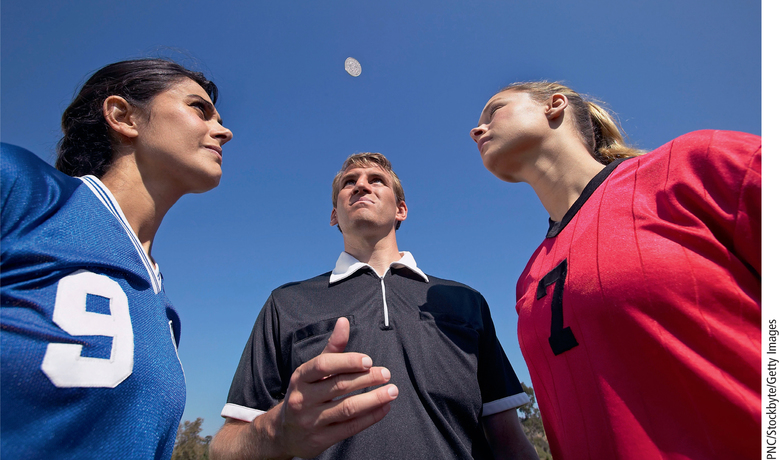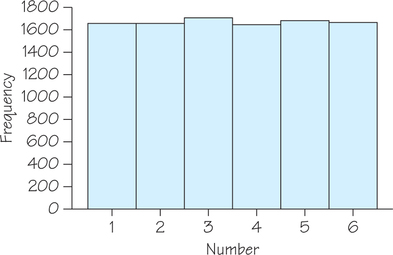8.1 Probability: The Mathematics of Chance 8
341

- 8.1 Random Phenomena and Probability
- 8.2 Basic Rules of Probability
- 8.3 Rules of Probability: Independent and Dependent Events
- 8.4 Discrete Probability Models
- 8.5 Equally Likely Outcomes
- 8.6 Continuous Probability Models
- 8.7 The Mean and Standard Deviation of a
Probability Model - 8.8 The Central Limit Theorem
Ever wonder how gambling can be a business? A business needs predictable revenue from the service it offers, even when the service is a game of chance. Individual gamblers can never say whether a day at the casino will turn a profit or a loss, but the casino itself takes few chances. Casinos are consistently profitable, and state governments make money both from running lotteries and from selling licenses for other forms of gambling.
342
It is striking that an individual roll of the dice, spin of the wheel, or flip of a coin is a total unknown, but the aggregate result of thousands of chance outcomes can be known with near certainty. To illustrate, Figure 8.1 shows the outcomes of four rolls of a die. Based on Figure 8.1, it is impossible to predict the outcome of the fifth roll. Figure 8.2, however, shows a histogram of 10,000 rolls of a die—and a very predictable pattern. The frequencies are nearly equal for each possible outcome 1, 2, 3, 4, 5, and 6.


The casino need not load the dice, mark the cards, or alter the roulette wheel. It knows that in the long run, each dollar bet will yield its five cents or so of revenue. It is, therefore, good business to concentrate on free floor shows or inexpensive bus fares to increase the flow of dollars bet. The flow of profit will follow.
A casino is not the only business that relies on the fact that a chance outcome many times repeated is quite predictable. For example, although a life insurance company does not know which of its policyholders will die next year, it can predict quite accurately how many will die. It sets its premiums according to this knowledge, just as the casino sets its jackpots. These are just two of the many types of companies and people that rely on chance behavior being predictable in the long run.
We begin this chapter with an introduction to the nature of randomness and probability, including how to use rules to calculate numerical values of probabilities. Then we examine further ways to model and calculate probabilities by gaining tools for counting the number of possibilities and by modeling real-life phenomena with discrete and continuous models. The mean and standard deviation, first introduced in Chapter 5, will be expanded to probability models. The chapter concludes with a discussion of a central result of inferential statistics known as the central limit theorem, which tells us about how the sample mean behaves regardless of the shape of the population from which it was calculated.